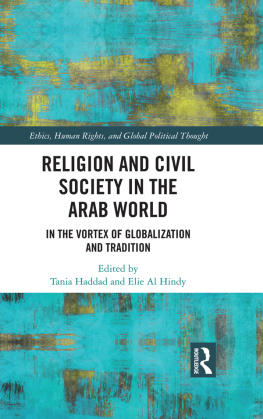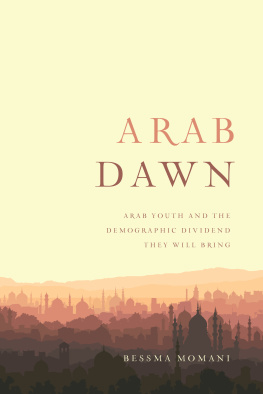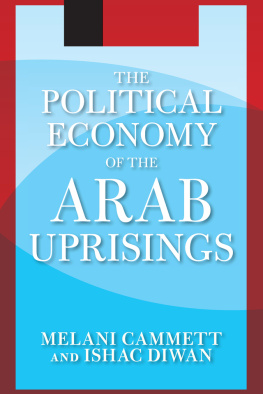ROUTLEDGE LIBRARY EDITIONS: SOCIETY OF THE MIDDLE EAST
Volume 16
POPULATION AND SOCIETY IN THE ARAB EAST
POPULATION AND SOCIETY IN THE ARAB EAST
GABRIEL BAER
Translated by
HANNA SZOKE
English translation first published in 1964 by Routledge & Kegan Paul Ltd
This edition first published in 2016
by Routledge
2 Park Square, Milton Park, Abingdon, Oxon OX14 4RN
and by Routledge
711 Third Avenue, New York, NY 10017
Routledge is an imprint of the Taylor & Francis Group, an informa business
English translation 1964 Routledge & Kegan Paul Ltd
All rights reserved. No part of this book may be reprinted or reproduced or utilised in any form or by any electronic, mechanical, or other means, now known or hereafter invented, including photocopying and recording, or in any information storage or retrieval system, without permission in writing from the publishers.
Trademark notice: Product or corporate names may be trademarks or registered trademarks, and are used only for identification and explanation without intent to infringe.
British Library Cataloguing in Publication Data
A catalogue record for this book is available from the British Library
ISBN: 978-1-138-19040-5 (Set)
ISBN: 978-1-315-62817-2 (Set) (ebk)
ISBN: 978-1-138-19236-2 (Volume 16) (hbk)
ISBN: 978-1-315-62963-6 (Volume 16) (ebk)
Publishers Note
The publisher has gone to great lengths to ensure the quality of this reprint but points out that some imperfections in the original copies may be apparent.
Disclaimer
The publisher has made every effort to trace copyright holders and would welcome correspondence from those they have been unable to trace.
POPULATION AND SOCIETY IN THE ARAB EAST
by
GABRIEL BAER
Translated from the Hebrew by
HANNA SZOKE
English translation first published in 1964 by
Routledge and Kegan Paul Ltd
Reprinted in 1998 by
Routledge
11 New Fetter Lane, London EC4P 4EE
Printed and bound in Great Britain
English translation 1964 Routledge & Kegan Paul Ltd
All rights reserved. No part of this book may be reprinted or reproduced or utilized in any form or by any electronic, mechanical, or other means, now known or hereafter invented, including photocopying and recording, or in any information storage or retrieval system, without permission in writing from the publishers.
The publishers have made every effort to contact authors/copyright holders of the works reprinted in The International Library of Sociology. This has not been possible in every case, however, and we would welcome correspondence from those individuals/companies we have been unable to trace.
British Library Cataloguing in Publication Data
A CIP catalogue record for this book is available from the British Library
Population and Society in the Arab East
ISBN 0-415-17578-X
The Sociology of Development: 18 Volumes
ISBN 0-415-17822-3
The International Library of Sociology: 274 Volumes
ISBN 0-415-17838-X
CONTENTS
3. Lower and Middle Egypt
4. Upper Egypt
5. The Sudan
6. The Arabian Peninsula
7. Iraq
8. Syria
9. Lebanon
10. Jordan
THIS book originated in lectures given during the last few years at the Hebrew University of Jerusalem and other institutions in Israel. The lectures were conceived as an introduction to the study of modern Middle Eastern history, economy, or politics; their aim was to present the main facts of population structure and the problems and trends of development of Middle Eastern Arab society. The book was written in 1958 and published in Hebrew early in 1960. For the English translation figures have been brought up to date where possible, research conducted during the last three years has been included, and books, articles, or other material published during this period have been taken into account. This edition is, therefore, a somewhat enlarged version of the original book.
Arabic names and terms have been transliterated as accurately as possible, but diacritical marks had to be omitted for the sake of simplicity. In some cases a conventional English spelling has been adopted. As one of the aims of this book is to make the student familiar with the literature on its subject, sources have been mentioned in detail in footnotes.
I wish to express my gratitude to my colleagues, my students, and the reviewers of the Hebrew edition for their critical remarks, for drawing my attention to additional material, and for encouragement. In particular, I wish to thank Professor S. D. Goitein, Dr Hayim Blanc, Dr Yonina Talmon, Mr Daniel Dishon, Mr Eliezer Beeri, and Mr Hayim Shaked. I am greatly indebted to my parents Dr Albert and Mrs Kaete Baer for help in several ways with the preparation of this edition; and I am grateful to the translator Mrs Hanna Szke for her patient and efficient work.
A few sections of the book have appeared in English in New Outlook (Tel-Aviv) and Middle Eastern Affairs (New York); the permission of these journals to reproduce the articles (with small changes and additions) is hereby acknowledged.
G. B.
October 1962
POPULATION and Society in the Arab East is a subject whose scope must be defined both in terms of the geographical territory covered and in terms of the matters under discussion in this book.
If we survey the literature of recent years, we scarcely find any two books on the Middle East which in fact deal with exactly the same countries. Usually the Maghrib, the countries of North Africa, are not included, but where exactly is the boundary between the Maghrib and the Middle East? From a geographical or historical viewpoint, the line should be drawn between Cyrenaica, which has always been associated with Egypt, and Tripolitania (Tarablus al-Gharb). As the two regions, however, are now united in one state, they have both been included in the present discussion.
Other boundaries have been set using the criterion that the Arabic language is spoken by the majority of the population under review. Israel, Turkey, and Persia have thus been excluded. On the other hand, non-Arabic-speaking minorities in the Arab countries are briefly described. The Arab East is thus the best name for this area, since the Arab countries would include the Maghrib, and the Middle East includes Israel, Turkey, and Persia. In short, then, this book is concerned with the population of Egypt, with roughly 26 million inhabitants, Sudan (10 million), the Arabian Peninsula (1314 million), Iraq (6

million), Syria and Lebanon (6 million), Jordan (1

million), and Libya (1 million); in all, some 65 million people.
Most works on the Arabs written during the last generation are concerned with problems of a political and economic nature. In the authors view a fundamental knowledge of the population, demographic problems, and social development of the Arabs is essential for the understanding of events in other spheres.












 million), Syria and Lebanon (6 million), Jordan (1
million), Syria and Lebanon (6 million), Jordan (1